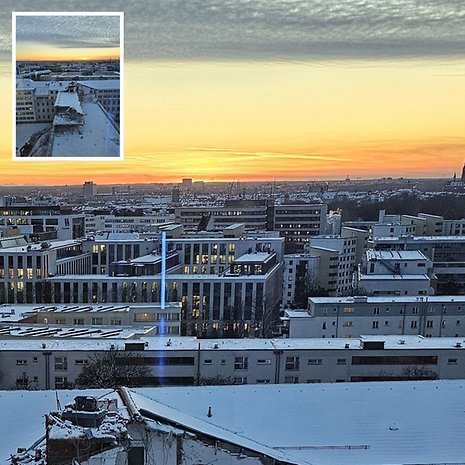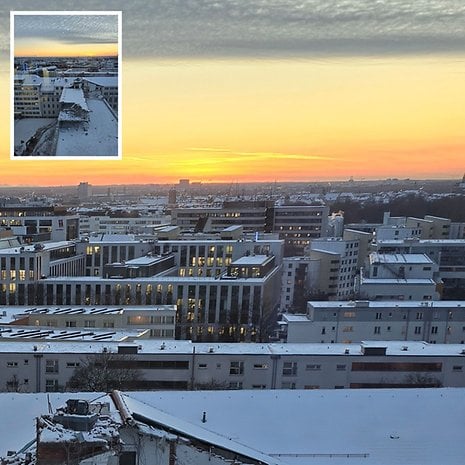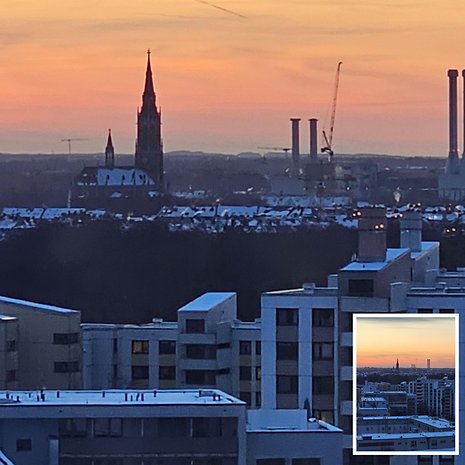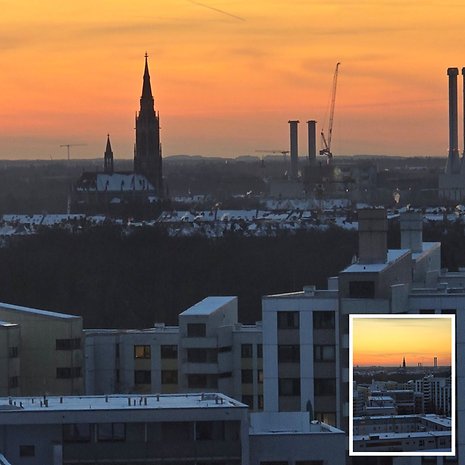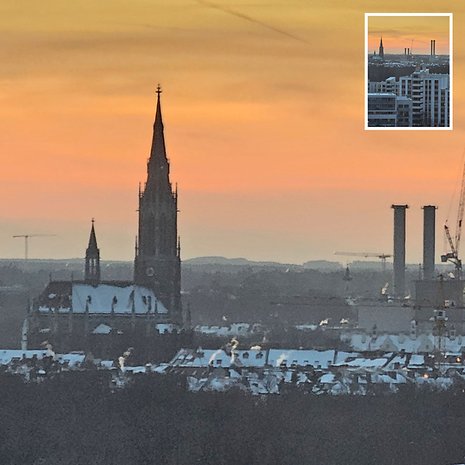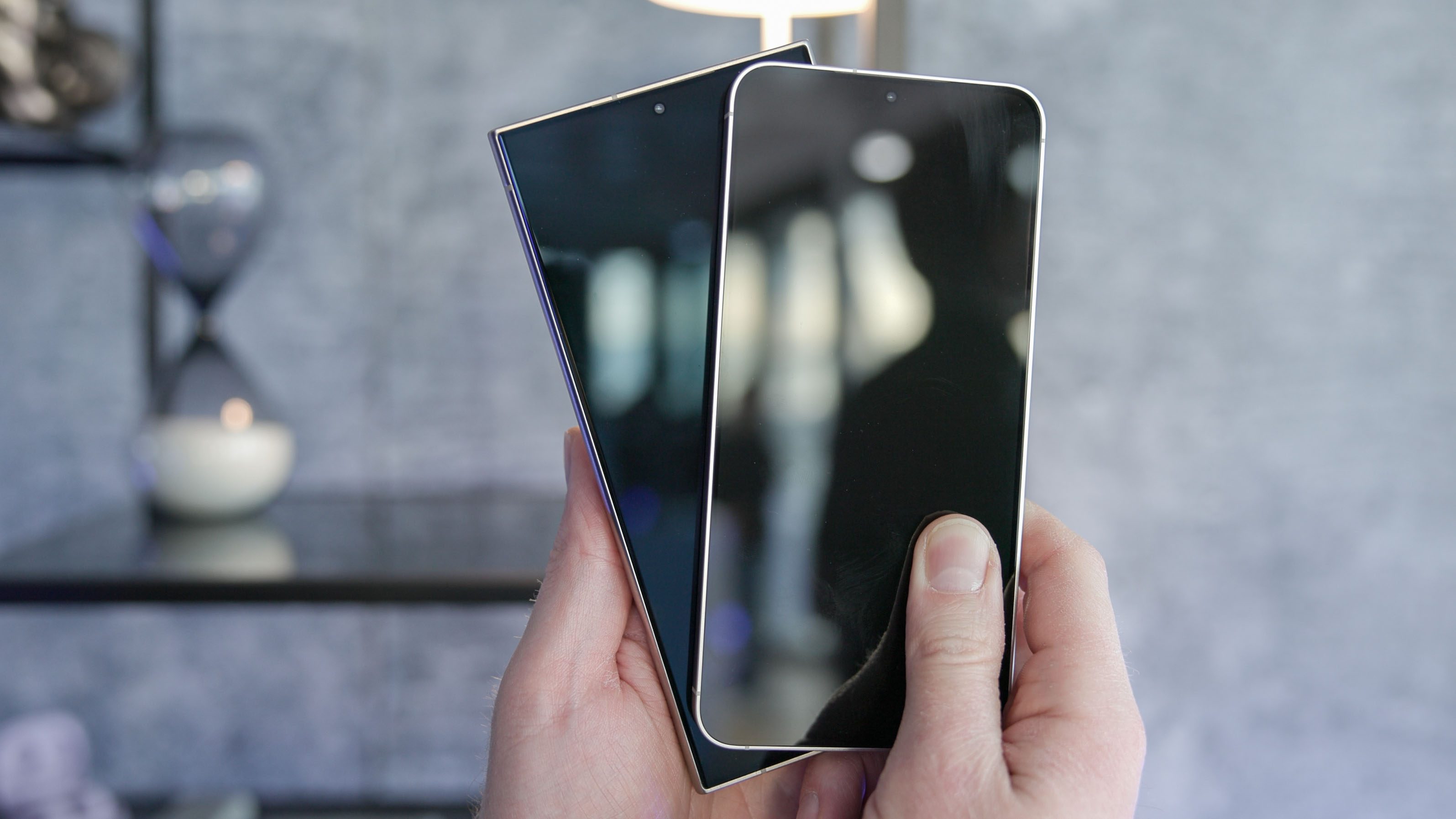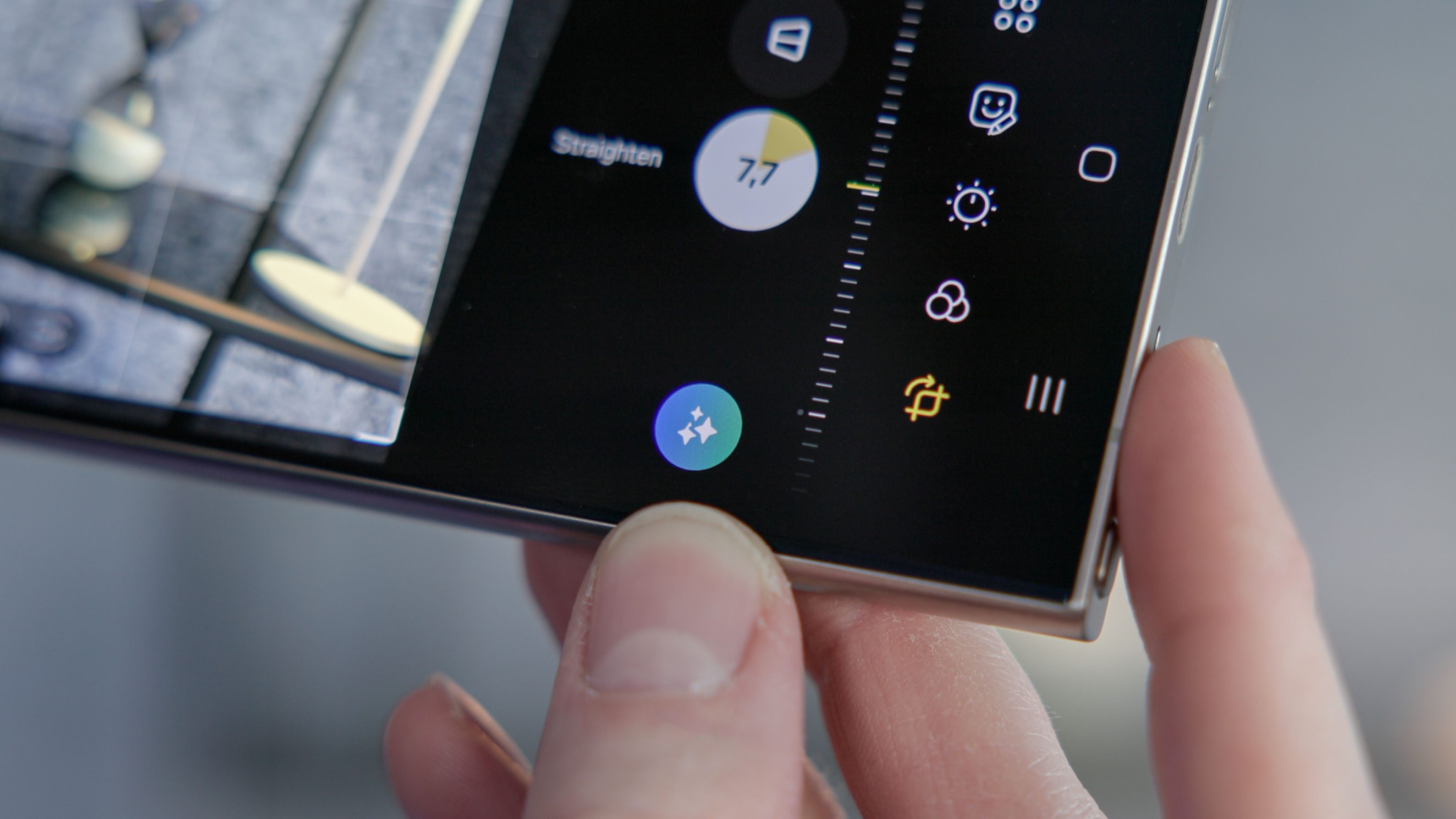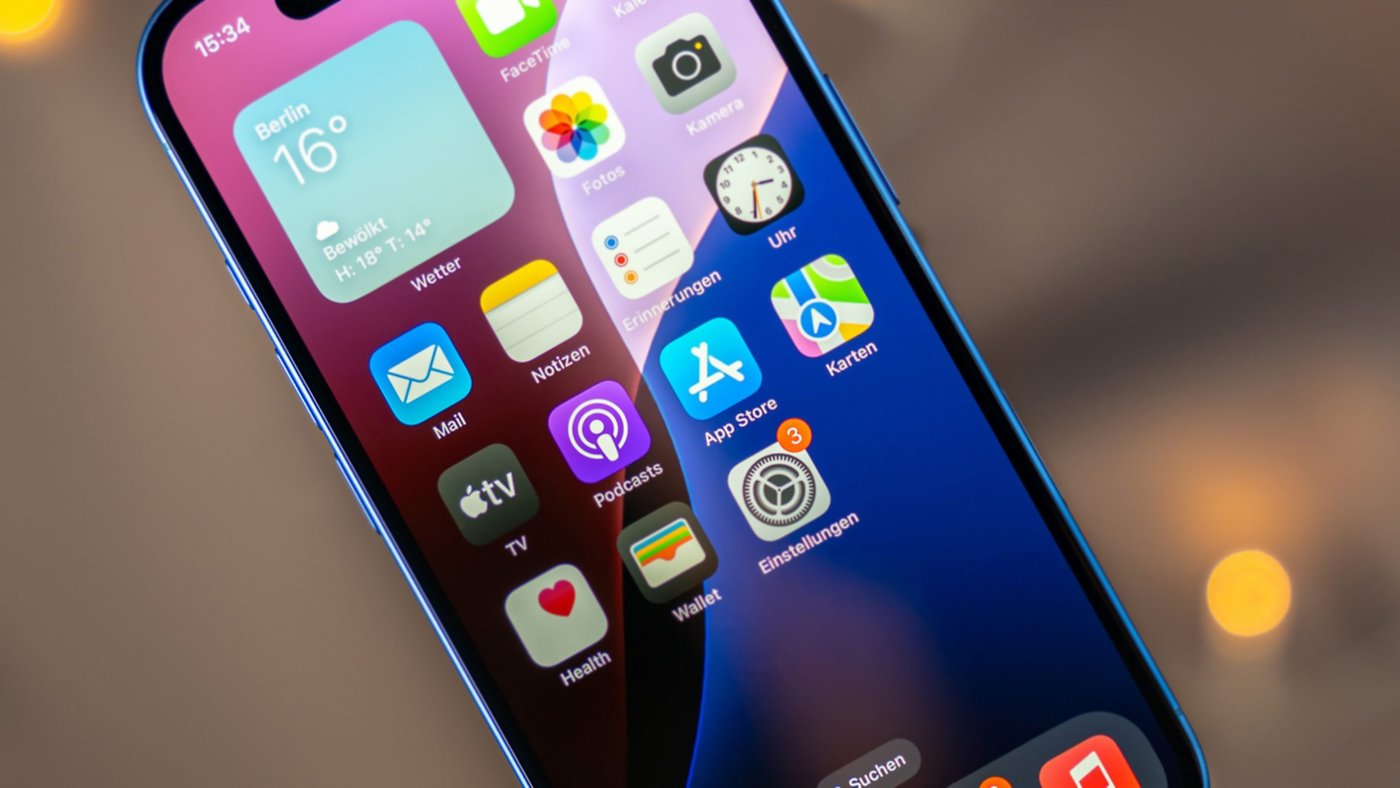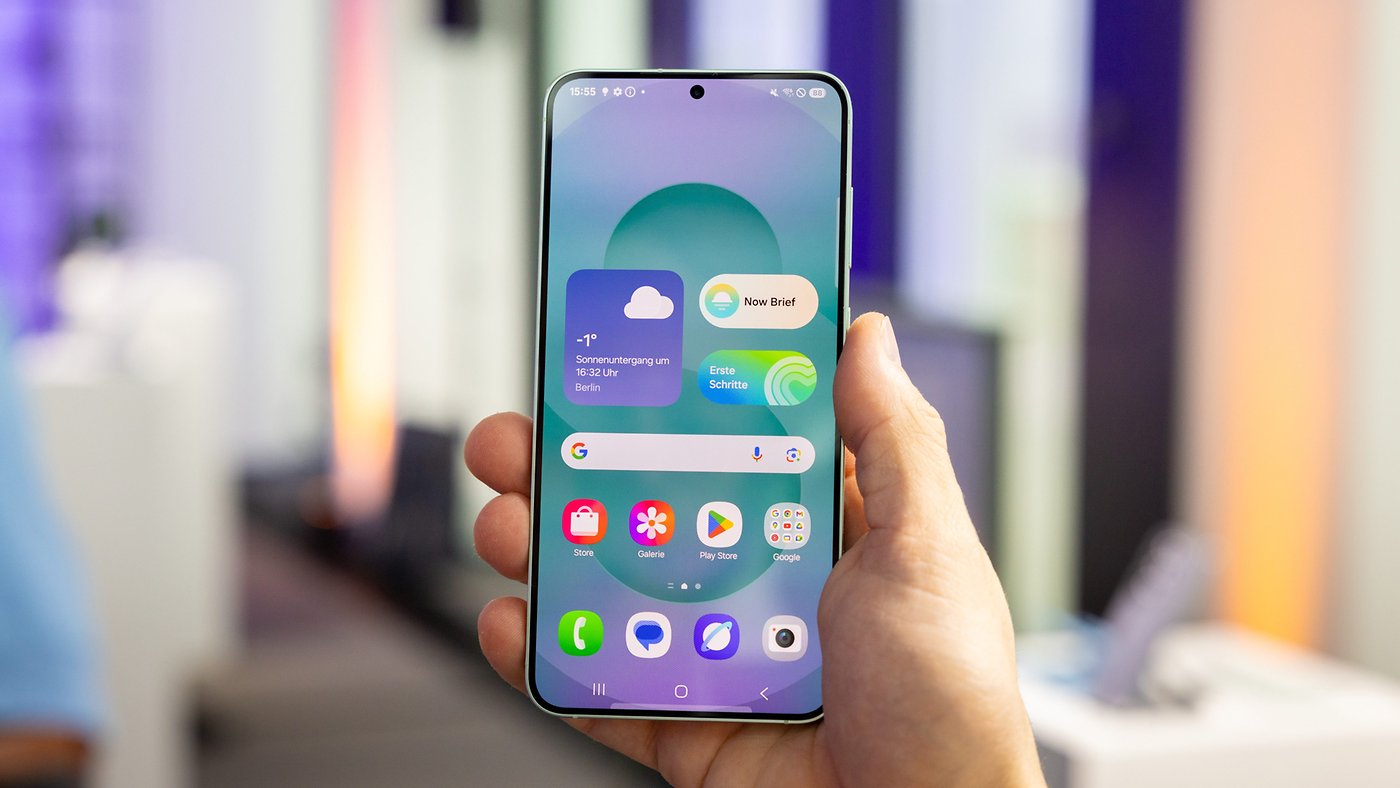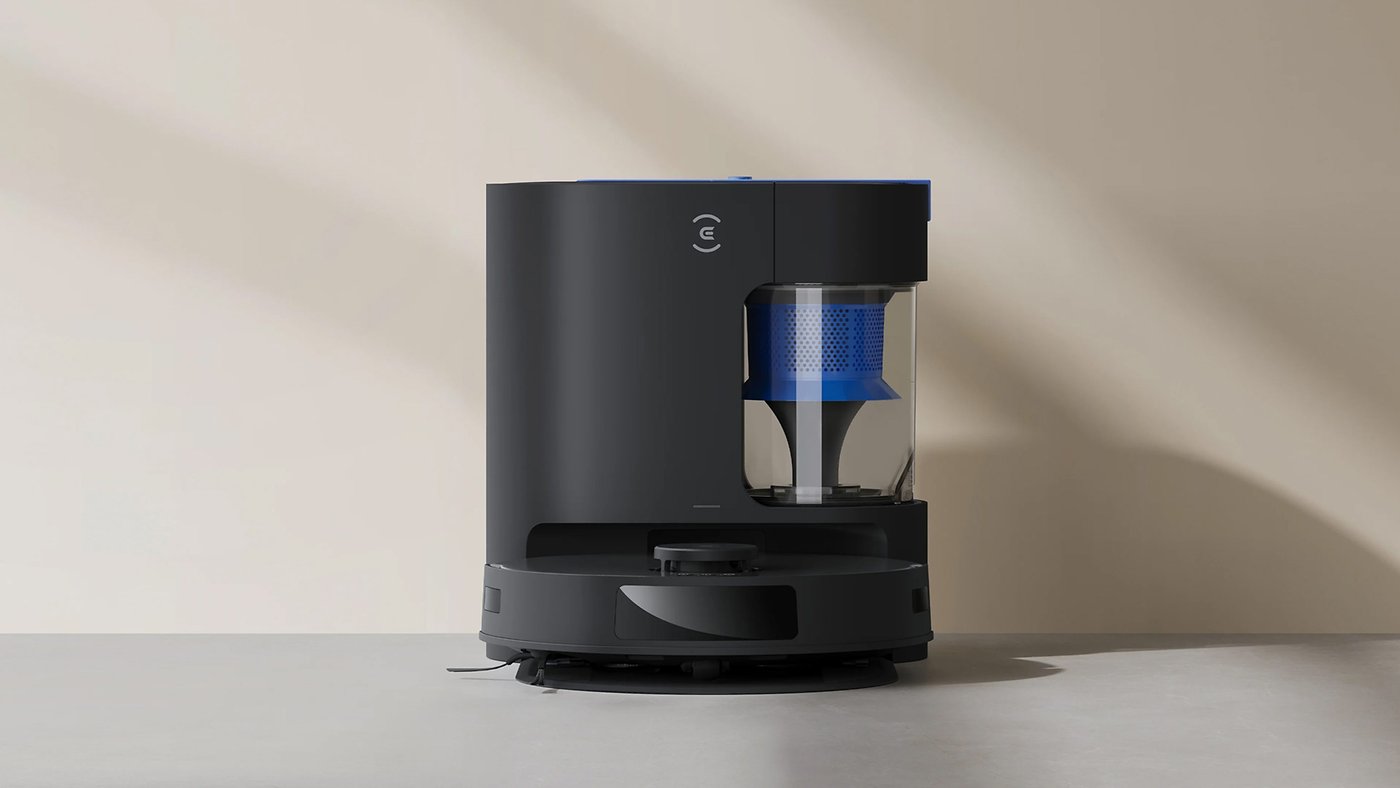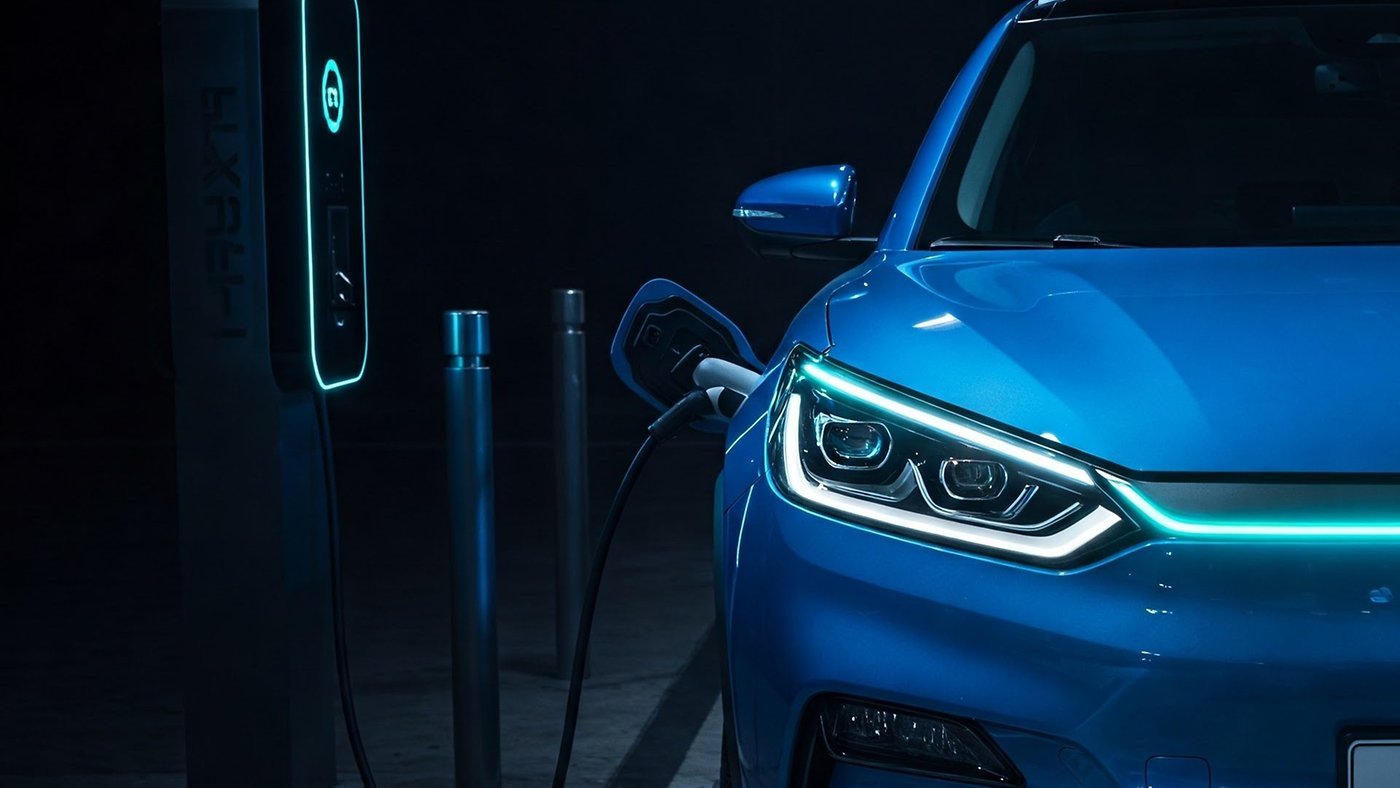
The Samsung Galaxy S24 Ultra is set to usher in the era of AI smartphones, the manufacturer promises. And indeed, the new high-end phone offers a colorful bouquet of futuristic features around the Galaxy AI—and in a no less impressive titanium housing. The first review of the Galaxy S24 Ultra is here!
Good
- Great design and high-quality materials including titanium
- Exciting new AI features for camera & productivity
- S-Pen is a real unique selling point
- Snapdragon 8 Gen 3 for powerful performance
- Seven years of Android updates
Bad
- Slow charging via cable and wireless
Samsung Galaxy S24 Ultra: All deals
Brief summary and pre-order campaign
The Samsung Galaxy S24 Ultra once again offers ultra-hardware in 2024. While the manufacturer has largely retained the design language, there is one welcome change: the AMOLED display is completely flat! The manufacturer has also given its new high-end smartphone a titanium frame, and the new Gorilla Glass Armor is used on the front and back.
More spectacular are the innovations under the hood: Galaxy AI brings many interesting features to the Galaxy S24, particularly in the areas of productivity and camera—and the latter also gets an overdue hardware upgrade.
You can pre-order the Samsung Galaxy S24 now, starting at $1299. The official sales launch is on January 31. As in previous years, Samsung is once again offering a pre-order promotion for quick decision-makers, where you can get a free upgrade to the next higher memory version plus an extra $150 trade-in bonus on your old device.
Design and processing
At first glance, the Samsung Galaxy S24 Ultra doesn’t look very different from the back. But the company has completely changed the materials all around and given the new Samsung flagship a titanium chassis.
Pros:
- Great workmanship and beautiful colors.
- Titanium housing feels very high-quality.
Cons:
- Just as heavy as its predecessor.
When placed on a table with the display facing downwards, the Galaxy S24 Ultra bears a striking resemblance to its predecessor. This similarity extends from the quartet of cameras and the laser autofocus sensor to the volume rocker and power button on the side.
The rounded sides and flat housing at the top and bottom further enhance this resemblance. Additionally, the Galaxy S24 Ultra retains the slot for the S-Pen stylus at its bottom.
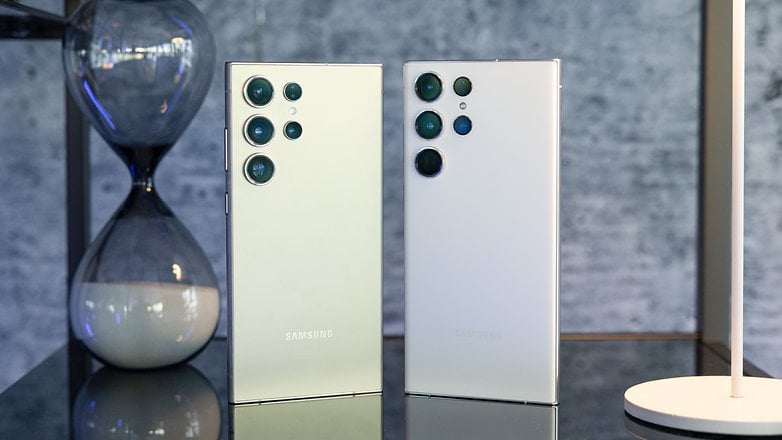
The fact that the frame is made of titanium is not obvious at first glance—and is also not noticeable when you touch it. The S24 Ultra is exactly the same weight as its predecessor, the S23 Ultra.
The Galaxy S24 Ultra is available here in the colors Titanium Black, Titanium Gray, Titanium Violet and Titanium Yellow. You can also get Jade Green, Sandstone Orange and Sapphire Blue exclusively in Samsung’s online store.
The front and back are made of glass, specifically the new Corning Gorilla Glass Armor. According to Samsung, the material offers four times better protection against scratches and knocks—whatever that means. The statement that 25 percent recycled material is used for the glass is clearer.
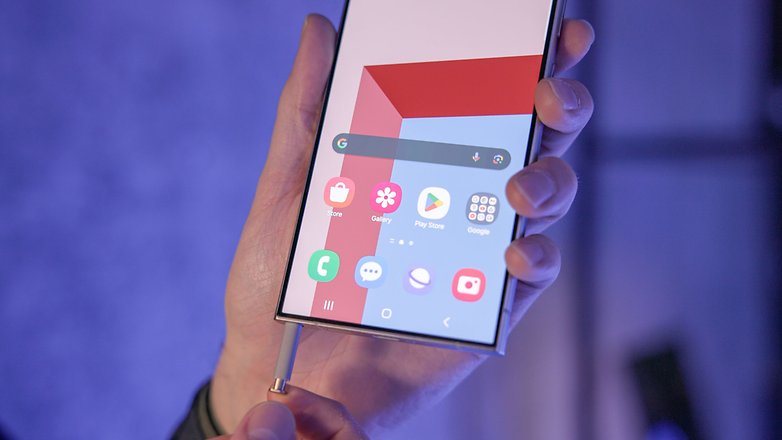
The S24 Ultra is also said to have become a little greener in general. According to Samsung, the ecological footprint of the new flagship corresponds to a CO2 equivalent of 66.4 kg, which is said to be an improvement of 5.1 percent compared to its predecessor.
Display
The Samsung Galaxy S24 Ultra brings a decisive change to the display: The screen is flat! This is the Koreans’ response to the many criticisms that have come from pen users in particular. Apart from that, the AMOLED panel is once again a real feast for the eyes.
Pros:
- Really great AMOLED panel.
- Noticeably fewer reflections.
- The screen is flat!
Cons:
Samsung’s Ultra series has regularly taken a beating for its display in the past. However, the reason for the uproar was not the size or the display quality, but the rounded corners. Especially when using the S-Pen, it was impractical to have to “drive around the corner” to edit content right at the edge. With the Galaxy S24 Ultra, the screen is now flat for the first time.
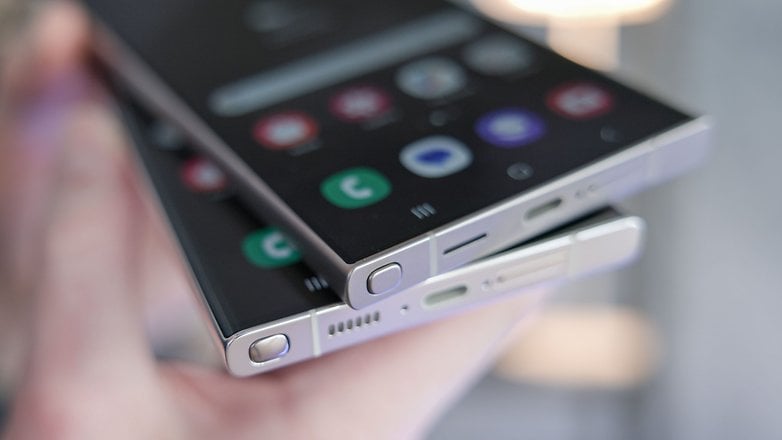
As with its predecessor, the AMOLED panel of the Samsung Galaxy S24 Ultra is again 6.8 inches in size and offers a QHD resolution of 3,088 x 1,440 pixels. Thanks to LTPO, the refresh rate ranges between 1 and 120 Hz, which saves energy or ensures a buttery-smooth display depending on the static (or dynamic) nature of the content shown.
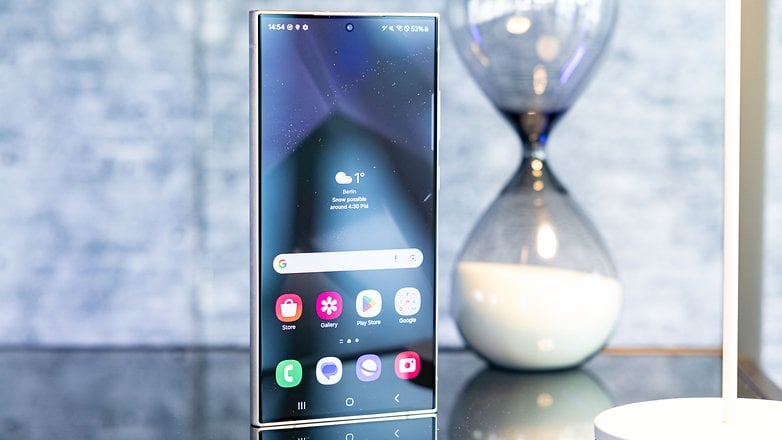
The maximum brightness of the panel peaks at 2,600 nits, which puts Samsung right in line with the current trend towards ever brighter screens. A tenth of that would have been enough, at least for the dim winter weather.
The Gorilla Glass Armor should also help in extremely bright environments—according to Samsung, the material reduces reflections by 75 percent. And indeed, in direct comparison with the Galaxy S24, the difference is clearly visible!
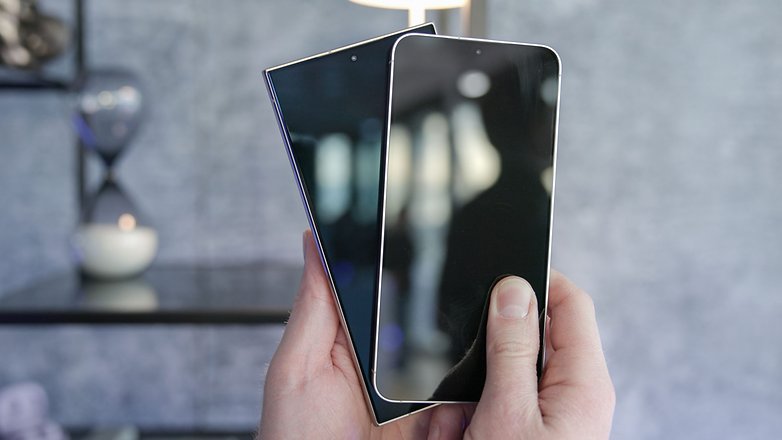
In addition, the manufacturer promises 12 percent better touch sensitivity for the digitizer. This should improve the smartphone’s response speed considerably, which should please gamers in particular. We haven’t had time for an extensive gaming session yet, but we’ll make up for that in the detailed test, we promise!
Software: Galaxy AI is here
Version 6.0 of One UI is running on the Samsung Galaxy S24 Ultra, which, in addition to a few cosmetic changes, brings out the big AI cannon—and thus not only shoots at sparrows, but possibly also the really big bird. But in a positive or negative sense?
Pros:
- One UI 6.0 interface is super stylish.
- Strong AI features for productivity.
- Strong update promise.
Cons:
- No new features for the S-Pen.
The Samsung Galaxy S24 Ultra runs Android 14 that works with the in-house One UI overlay in version 6.0 (first impressions). In addition to a few new fonts here and a few fresh quick settings there, Samsung is focusing heavily on AI with the Galaxy AI. We have already tried out a few features for you, you can find a more detailed test of the AI features in the link after the features.

Here is an overview of the most important features:
- Circle to Search with Google: Press and hold the home button and search for any content on the display by circling it, for example on photos.
- Transcription support and note assistant: Create transcriptions of conversations, summarize them and organize your notes intelligently.
- Writing assistant in the Samsung keyboard: Write your emails, text messages and social posts with customizable tonality from casual to formal.
- Live translation for phone calls: Speak into the phone in your language, and the other party will receive a live translation in one of 13 languages.
You can read more about the new AI features for photos and videos in the “Camera” subsection. Click here for the detailed first test of the Galaxy AI.
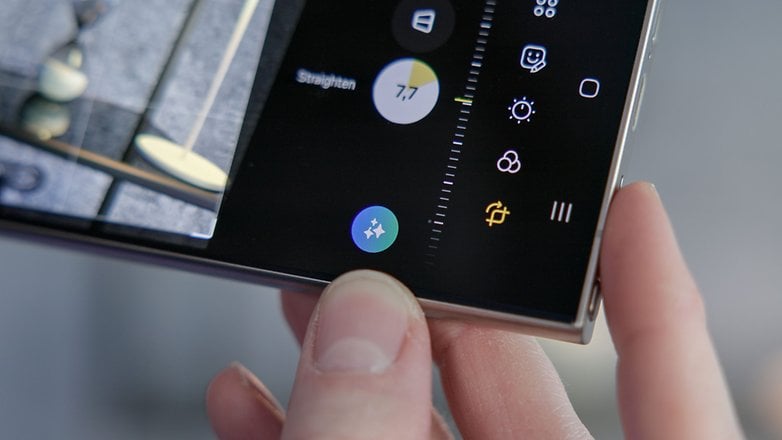
Last but not least, Samsung also made a strong update promise for the entire Galaxy S24 series: All smartphones will receive seven years of Android updates and security patches! This means that the Galaxy S24 Ultra would still be running Android 21 in 2031—hard to imagine, right?
Samsung Galaxy S24 Ultra performance
The Galaxy S24 Ultra marks a novelty in Samsung’s S-Class. For the first time, the standard and Plus models have a different SoC to the Ultra flagship—except in the US. The two smaller models run on the Exynos 2400, while the Galaxy S24 Ultra is equipped with the Snapdragon 8 Gen 3 with the addition “for Galaxy”. According to Samsung, this makes no difference.
Pros:
- Good hardware performance.
- Wi-Fi 7 on board.
Cons:
- No progress in battery & charging speed.
Even before the S24 launch, there were rumors about exactly this SoC distribution in the S24(+) and S24 Ultra—and here the Snapdragon 8 Gen 3 for Galaxy was about 5 to 10 percent ahead in the various leaked Geekbench tests.
In practice, the difference in performance between the three models will probably be negligible. What is more exciting is how the manufacturer handles the cooling in the different devices and how long they can deliver their peak performance.
During our first brief hands-on, we already had the opportunity to run the 3DMark WildLife StressTest Extreme on the S24 Ultra and the S24+. This benchmark pushes the two smartphones to their limits for 20 minutes and records the available performance over time.
Please note: The Samsung Galaxy S24+ and S24 Ultra that we used for this benchmark were not yet running the final firmware with which the devices will be delivered—so there may still be minor changes. But now the result:
| Samsung Galaxy S24 Ultra (Snapdragon 8 Gen 3 for Galaxy, firmware not final) |
Samsung Galaxy S24+ (Exynos 2400, firmware not final) |
Samsung Galaxy S23 Ultra (Snapdragon 8 Gen 2 for Galaxy) |
Redmagic 9 Pro (Snapdragon 8 Gen 3) |
Pixel 8 Pro (Tensor G3) |
|
|---|---|---|---|---|---|
| 3DMark Wild Life Extreme Stress Test |
|
|
|
|
|
The Samsung Galaxy S24 Ultra achieves a respectable performance of 4,478 points, but is significantly lower than the Redmagic 9 Pro gaming smartphone, which scored 5,201 points in our test. The stability is also significantly lower than that of the Redmagic smartphone.
In order to avoid overheating, the S24 Ultra throttles down considerably and ends up with only 2,816 points (62.9 percent) in the worst run after around 20 minutes. The Galaxy S24 Plus comes very close: In the best run, the model achieves 4,282 points, in the worst 2,594 points (60.6 percent).
Samsung promises a 1.9 times larger vapor chamber for cooling with new materials on the thermal interface; however, the current generation does not make a huge leap compared to the S23 Ultra.
With the current firmware (as of January 16, 2024), last year’s flagship scores 3,762 points in the best run and 2,467 points in the worst run (65.6 percent). But as I said, the firmware was not yet final on our pre-test device.
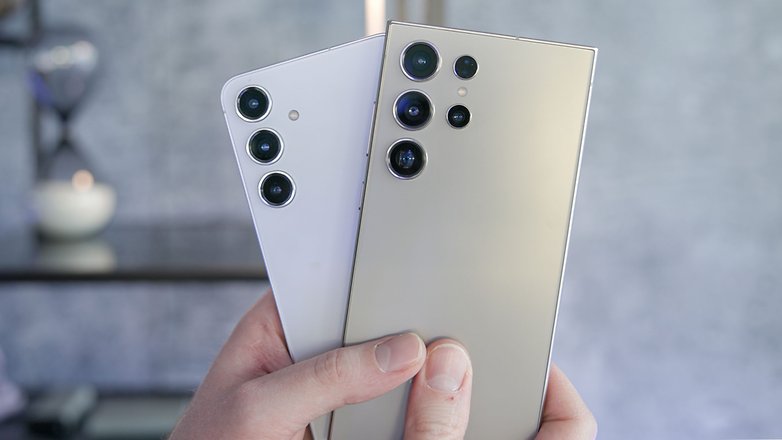
Compared to the Galaxy S23 Ultra, Samsung promises 18 percent faster CPU performance. The NPU is even said to have increased by 42 percent, which really makes sense with all the AI features. According to Samsung, the Snapdragon 8 Gen 3 earns the addition “For Galaxy” thanks to a five percent faster performance core and increased NPU performance.
The GPU should also see significant gains, namely 32% compared to the S23 Ultra. In terms of ray tracing, the S24 Ultra is even expected to increase by 57 percent. Samsung is also working with various game studios to enable ray tracing support on the smartphone. The following titles are currently confirmed:
- NightCrow (Wmade)
- Arena Breakout (Tencents)
- Tarisland (Tencents)
- Diablo Immortal (Blizzard/Netease)
- Racing Master (Netease)
Whether this will be enough in the long term to match the iPhone 15 Pro Max, which makes an excellent games console, remains to be seen in the detailed test. At least when it comes to triple-A titles, Samsung has done much less than Apple.
Finally, a sentence about the battery: The Samsung Galaxy S24 Ultra plays the caretaker here. It still has 5,000 mAh, and nothing has changed in terms of fast charging —if you can even call it that compared to Xiaomi & Co. You can again charge with 45 W via cable and 15 W wirelessly thanks to Fast Wireless Charging 2.0.
Samsung Galaxy S24 Ultra camera
The Samsung Galaxy S24 Ultra also has an impressive camera setup in 2024, which makes much more sense in terms of division than last year. The second telephoto camera slips from 10x optical (S23 Ultra) to 5x optical, thus reducing the pointlessly large hole in the focal length range—if only Samsung had taken care of the 3x lens. However, the biggest innovations are in the AI features.
Pros:
- Spectacular new AI features.
- Better camera lineup, …
Cons:
- … which is still not ideal with a mini sensor in the 3x telephoto lens.
First of all, the hardware: The Galaxy S24 Ultra uses the same 200-megapixel Isocell HP2 sensor as the Galaxy S23 Ultra. However, the 1/1.3-inch image sensor has a new image processor this year. In direct comparison with the Galaxy S23 Ultra, there is at least no visible difference in speed.
Finally, the ultra-wide-angle and selfie cameras use the same sensors as their predecessors. The ultra-wide-angle camera has a sensor size of 1/2.55 inches and a resolution of 12 megapixels, while the selfie camera offers 1/3.2 inches and also 12 megapixels.
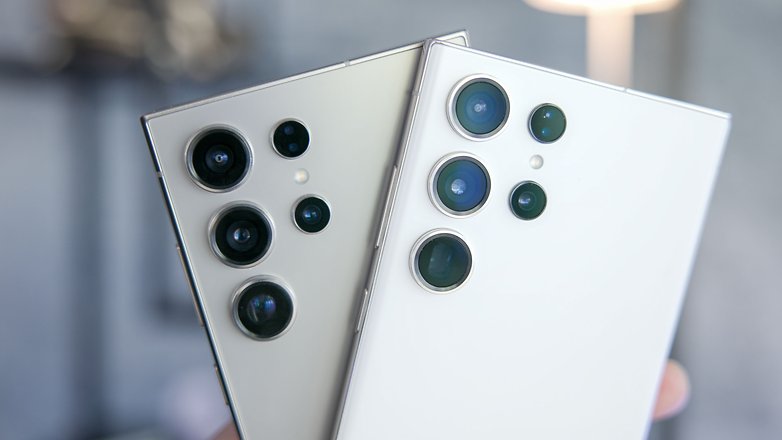
Now it gets interesting with the telephoto cameras. The first telephoto camera again offers a 3x optical zoom with exactly the same 1/3.52 inch mini sensor as last year. The 5x zoom has a significantly larger sensor at 1/2.52 inch, which also offers a higher resolution of 50 megapixels—and therefore more room for digital zooming at the back. But what does all this mean in concrete terms?
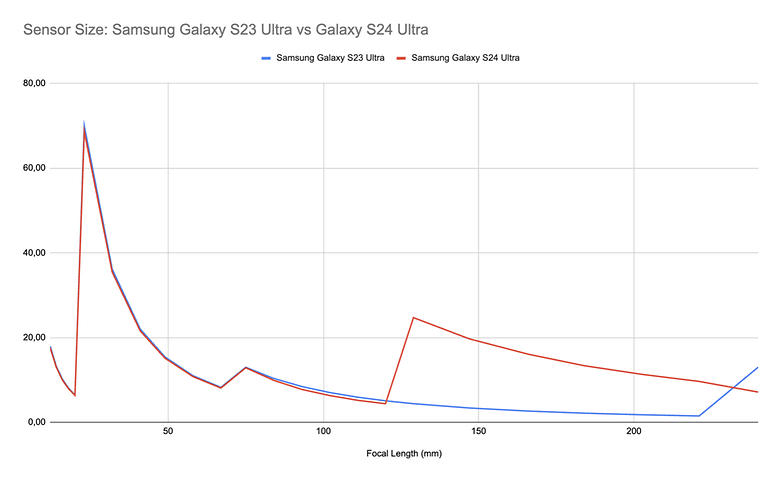
As the diagram above shows, the Galaxy S24 Ultra has significantly more sensor area available across almost the entire zoom range compared to its predecessor. And more sensor area generally means better image quality. In terms of resolution, the image looks similar in the 3x to 5x range, see the diagram below.

During the short test phase, we naturally did not have the opportunity to test the cameras in detail. But at least we were able to take a few comparison photos with the Galaxy S23 Ultra. Here, we can also verify the theory from above quite well in practice.
Again, the obligatory note: The firmware of the S24 Ultra was not yet final, and due to the slightly different image sections, the exposure of the photos may vary. The detail reproduction is more interesting at this point.
In the ultra-wide angle and with the main camera, there are practically no differences in terms of image quality. However, the imaging performance of the 3x optical zoom is much better with the larger sensor of the Galaxy S24 Ultra. The same applies to the 5x optical zoom.
At zoom levels above 10x, however, the Galaxy S23 Ultra is a little better, although the difference is not dramatic. But just ask yourself the question (or take a look at your smartphone gallery): How often do you really use Zoom levels beyond 10x?
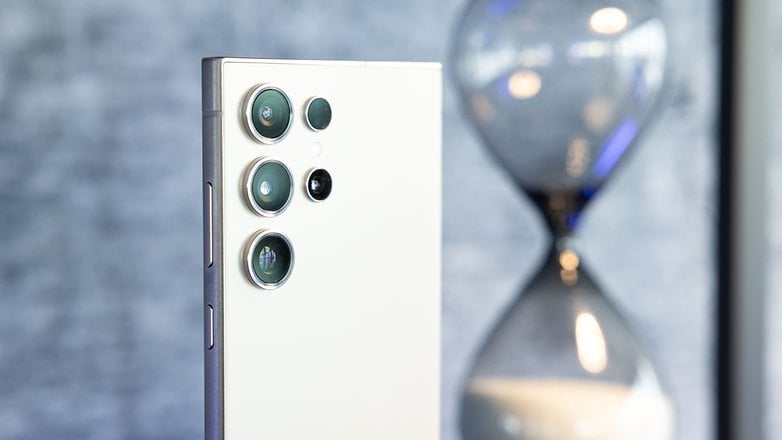
New AI features of the Galaxy Camera
As already mentioned, the Samsung Galaxy S24 Ultra also comes with a few new AI features for the camera. Here again is a quick run-through, click on the link for a more detailed first test of the Galaxy AI.
- Image enhancement: Retouches your portraits and removes reflections from photos, for example if you have taken a photo through a window pane.
- Generative AI: Zoom out of photos you have already taken, the AI generates the missing details—or moves objects in photos.
- Instant Slow-Mo: AI interframe calculation turns your shots into stylish slow-motion videos.
Photos created with the help of generative AI are marked in two different ways. Firstly, there is a small watermark at the bottom right of the photo. And secondly, there is a corresponding note in the metadata of the images. Both can of course be easily removed—a screenshot of a slightly enlarged image section, for example, is sufficient.
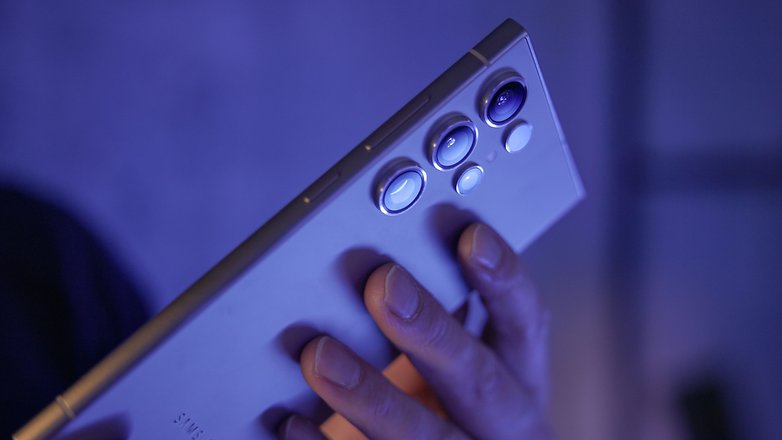
Early Verdict
The Samsung Galaxy S24 Ultra packs a powerful hardware punch with its titanium chassis, Snapdragon 8 Gen 3, more powerful camera setup and more—but the most spectacular new features are in the software.
When it comes to productivity and the camera, there is a hail of new AI functions that we have rarely or never seen before. Is this suitable for everyday use? And is the Galaxy S24 Ultra really the “first true AI phone” in the post-smartphone era, as Samsung says? The detailed review will show that in the coming weeks.

